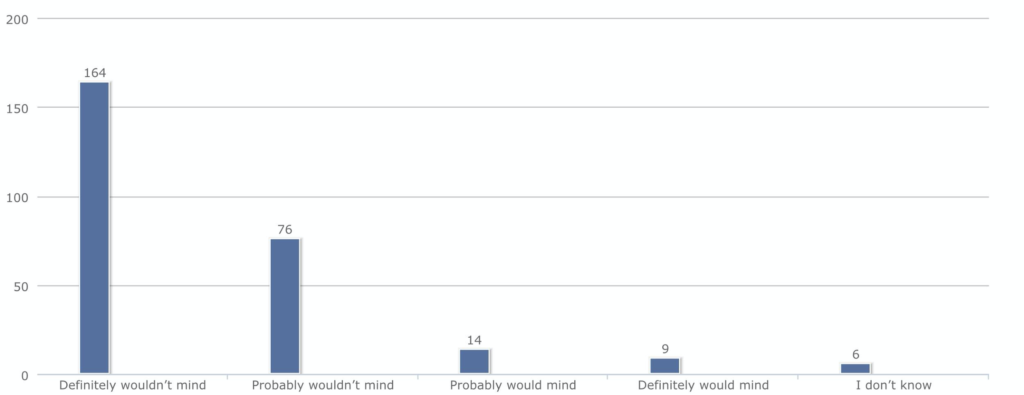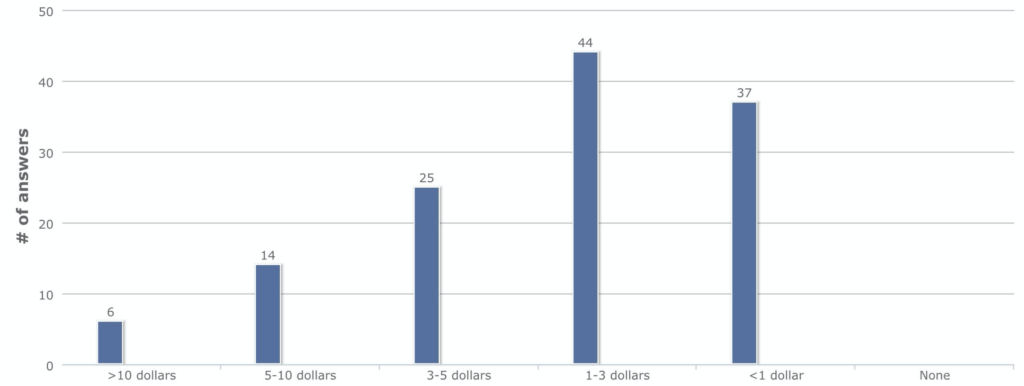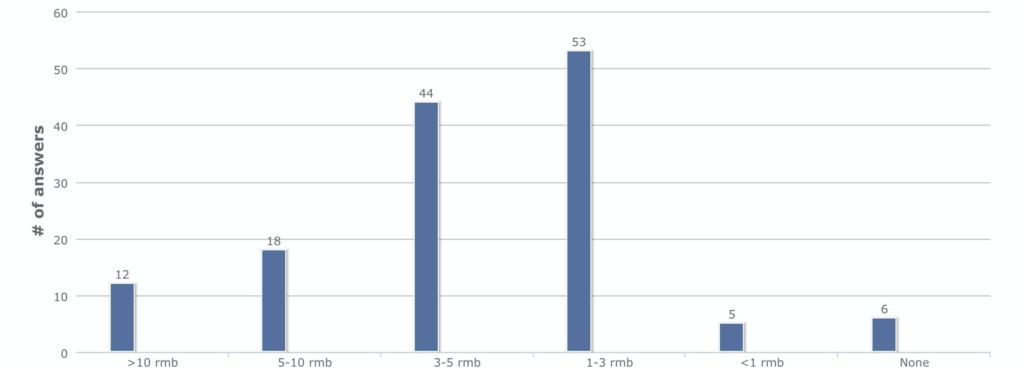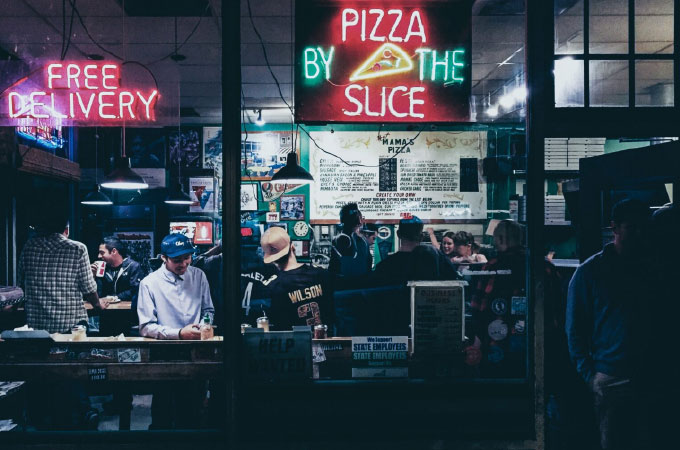
Author: Yuqing (Troy) Mao
Phillips Academy Andover
August, 2020
Background
Since the invention of the television in the 1950’s, food delivery has become a blooming market. The advent of online delivery in 2004 has seen apps like UberEats and Grubhub gain popularity. However, as such service grows viral, its environmental impact becomes considerable. Meituan, one of the leading food delivery platforms in China, delivered 6.4 billion food orders in 2018 and contributed approximately 1.6 billion tons of packaging waste. In the EU, researchers in the University of Manchester estimate that over two billion disposable takeaway containers are used every year. A “green” approach to food delivery is crucial for the development of this convenient service while preserving the environment.
In fact, there has been notable effort made to make the food supply chain more sustainable. The term “food miles” was invented in 1990 as a unit to measure how much pollution is caused by transporting foods from its origin to the customers. The creation of this term encouraged customers to get food from local sources. Moreover, food delivery apps have suggested different ways to limit the amount of waste and pollution of food delivery. Yet, there is more to be done.
What have we done to reduce the environmental impact of food delivery?
As food delivery became a huge business, people have made multiple attempts to reduce its environmental impact. Different communities also came up with different ideas that suit their own environment. China, for instance, due to its high population density, enables shorter delivery distances from customer to customer. As a result, electrical bikes have become the top choice for food delivery, which is more sustainable and expedient than cars in the busiest parts of cities.
Drone delivery is also an emerging possibility. This option for sure fixed the environmental impact of food delivery, but its large-scale implementation demands additional technological development.
Recyclable tablewares also became popular for deliveries, as they create less environmentally-harmful waste.
Food delivery apps have also strived to improve sustainability of food delivery. In recent years, food delivery apps have created various policies and options that aim to reduce the environmental impact of food delivery. Uber Eats, for example, waives delivery fees for customers who order from a range of restaurants that require shorter delivery routes. This allows one driver to pick up multiple deliveries and reduce time on the road. Doordash, another delivery app, also has a policy that restaurants default to not including tableware with your order, which saves the waste from single-use tablewares. These are all viable options. This research will base on these existing improvements and design a specially customized system for students that these apps could take advantage of in order to reduce environmental impact.
The food supply chain is a complex process. It operates in a dynamic, time-sensitive and complicated environment, where efficiency and quality are vital. There are several key factors which play influential roles in the development of the food supply chain.
Quality
Since food is the object in question, quality deserves to be on the top of the list. Quality is essential to customer satisfaction and effective management of the food supply chain. It is worth allocating resources to this end. No matter how much we change the supply chain for the better, the quality of food should remain a high standard for consumer safety. Fewer food miles will result in a decrease in the energy required of storage and transportation.
Technology
Technology is vital to creating a more sustainable food supply chain. Examples include accurate weighing, refrigeration, controlled atmospheric bacterial growth inhibition, pasteurisation, micro-element pollutant detection, bar coding, electronic recognition of packaging, the use of stabilisers, artificial insemination, embryo transplantation, precision seeding, environmentally and welfare friendly animal housing, and organic crop and animal production systems. “Greener” technology could be the key to improve our current supply chain.
Information Technology
Information technology focuses on software connections, interweaving the entire supply chain. From food traceability to online food delivering apps, information technology is indispensable. More sustainable information technology may improve the supply chain. In this research, food delivery apps is at the center of information technology analyses.
Logistics
Logistics entail the movements and storage of the food products in question. It uses technology and information technology as vehicles to complete the supply chain. As mentioned previously, as technology and information technology develop, the logistics of food could improve concurrently to better sustainability.
Traceability
Traceability denotes the ability to track the product along the supply chain, a crucial variable in food quality. Food delivery apps’ attention towards this should not be neglected when we are aiming for a more sustainable food supply chain.
Consumer
Consumer need and satisfaction are crucial for any supply chain. In other words, consumers drive the supply chain. As a result, it is important to understand the consumer’s needs and make sure that greener systems do not come at the expense of consumer satisfaction. In this research, this will be completed by surveying current students in boarding high schools.
These interconnected factors form the entire food supply chain. As mentioned above, along this trail from farms to stores to customers, storage and transportation leave a considerable amount of carbon footprint and waste and room for improvement.
This research focuses on the end delivery or transportation part of the food supply chain: from restaurants or stores to customers in a campus setting. In this process, there are two major factors that contribute to the environmental impact of food delivery: traffic emissions during transportation and the packaging waste. While the emission caused by traffic during delivery is negligible compared to regular traffic, the amount of waste produced by providing delivery services is not. Americans throw out about 120 billion disposable cups every year from takeouts and deliveries. In other words, each person in this country throws out 363 paper, plastic, and Styrofoam cups every year. We haven’t quantified how much of US plastic waste is a result of takeout but we do know that packaging for food, beverages, cosmetics, and medications contributes to 30% of municipal solid waste in the United States. As such, a sustainable food supply chain must address this shortcoming.
Research Question
What kind of system could reduce the packaging waste produced by food delivery service in the campus setting?
Hypothesis
When discussing sustainable waste management, recycling is always a keyword. However, the key difficulty here is that plastics or paper packages cannot be recycled. As a result, reusable packaging becomes ideal. 1950’s milk delivery systems involved a milkman putting bottles of milk in a milk box and collecting empty bottles from these boxes. These used bottles would then be delivered to a warehouse where they’re cleaned and replenished for the next order. A similar approach for food delivery might work with proper management.
There are a couple of differences between online food delivery and milk delivery that will affect this system. First, all milk for milk delivery comes from one or a few warehouses. However, online food delivery services deliver food from thousands of restaurants. Second, the warehouses and the milk delivery service are from the business, which is much easier to manage and control. However, restaurants are individual businesses, which are hard to collectivize. A solution is not impossible, however.
A new business could be created that focuses on the distribution and collection of reusable food packaging and tablewares. This business could be a company that cooperates with the food delivery apps and the restaurants, sending out sets of table wares and packages to restaurants that collaborate with food delivery apps. When orders come in, the restaurants will put the food in these reusable containers and deliver it to the customers. When customers finish eating, they can put the used reusable containers in a box prepared by the company that cleans and redistributes them for the next use.
However, there are thousands of households and apartments that use online food delivery service–how can one execute such a project? The first audiences of this service can be the dorms on campuses. There are limited dorms in a school and it is easy to locate them. However, we must consider how a company can convince restaurants to use their containers. What price is acceptable? How will the restaurants know if this order is from a dorm? Can this business launch and survive? These are all questions that require further research.
A similar existing service is called Loop, an online shopping service that provides reusable packaging. It delivers items in a specially designed reusable package called the “Loop Tote” collected for reuse. This data could be super helpful for the development of my proposal.
Research Methodology
The current global situation renders sources limited, but here are the sources that I plan to use:
1. Google/Google Scholar
General information collection. This is where I could get a head start on my research but it will not be my focus.
2. School Library / Various Databases.
This is where I will spend most of my time. Databases like Gale and ScienceDirect gives lots of valuable papers in my field of research.
3. Online Survey
This will be one of my hardest steps in my research. Developing surveys and analyzing survey data require more research. However, I do believe that surveying students in boarding schools who are the customers of my proposal will yield a much better sense of their need and how to make this proposal work.
Survey Result & Conclusion:
To test the feasibility of the hypothesis, a survey was conducted to collect feedback of the target market. Until the 13th of August 2020, 272 responses were collected. In the responses, approximately 88.24% of participants said they definitely or probably wouldn’t mind carrying their food containers to a recycle box in front of their dorm after finishing the food they ordered.

After knowing that the most target customers are willing to act on the incentive, cost/profit becomes the next factor. Since the results are from all over the world and different places have different currencies and prizes for food, it is hard to ask a survey question that’s suitable for all participants. As a result, two different questions were asked based on the participants’ answers to the previous questions. If the participant chose that they study in China, they received the question “How much more money are you willing to spend for reusable food containers?” in RMB (The Chinese currency). Otherwise, if the participant chose their location of study as the US, UK, Canada or Australia, they received the same question in USD with the same numbers. (A Chinese student will choose from a range between 0-10 RMB while others will choose from a range between 0-10 USD. 1 USD approximately equals to 7 RMB.) The cost of online food ordering in these latter countries is much higher than the cost of online food ordering in China. Therefore, it is not reasonable to let the participants who live in China spend the same amount of extra money on reusable containers as participants who live in the other countries. Thus, two sets of data are collected.


The two graphs show a similar distribution of answers. 69.29% of Chinese participants are willing to pay 1-5 rmb more for reusable food containers with 37.86% willing to pay 1-3 rmb more and 31.47% willing to pay 3-5 rmb more. This data shows that the cost of reusable containers for each order needs to be approximately 3 rmb or less in China. 80.95% of participants who live in the US, UK, Australia and Canada are willing to pay 0-5 usd more (0 is not included) for reusable food containers with 29.37% willing to pay 0-1 usd more (0 is not included), 34.92% willing to pay 1-3 usd more and 19.84% willing to pay for 3-5 usd more. This shows that the cost of the containers for each order should be in the range of 1-3 dollars for each order. This cost not only includes the cost of the containers but also includes the cost for recycling, cleaning and redistribution.
In conclusion, the target markets are willing to act on this incentive if it won’t dramatically increase their cost on online food ordering. More economic calculations need to be done in order to let this service enter the industry and make profit.
Work Cited
Mentor: Kurt Teichert, Senior Lecturer of Environment & Society at Brown
“Glossary:Carbon Dioxide Equivalent.” Eurostat, europa, 9 Mar. 2017, ec.europa.eu/eurostat/statistics-explained/index.php/ Glossary:Carbon_dioxide_equivalent. Accessed 5 Apr. 2020.
“Criteria Pollutants.” Idaho Department of Environmental Quality, www.deq.idaho.gov/air-quality/air-pollutants/criteria-pollutants/. Accessed 6 Apr. 2020.
“Food miles movement fueled by local food.” Environmental Nutrition, vol. 34, no. 6, June 2011, p. 3. Gale In Context: Science, https://link-gale-com.proxy5.noblenet.org/apps/doc/A258362637/GPS?u=mlin_n_phillips&sid=GPS&xid=dbf5e539. Accessed 11 May 2020.
Food Supply Chain Management, edited by Michael A. Bourlakis, and Paul W. H. Weightman, John Wiley & Sons, Incorporated, 2004. ProQuest Ebook Central, https://ebookcentral-proquest-com.proxy5.noblenet.org/lib/andover/detail.action?docID=351145.
Dokoupil, Tony. “The Carbon Cost From Farm To Fork.” Newsweek, vol. 151, no. 11, 17 Mar. 2008, p. 12. Gale In Context: Opposing Viewpoints, https://link-gale-com.proxy5.noblenet.org/apps/doc/A176486114/GPS?u=mlin_n_phillips&sid=GPS&xid=327dd499. Accessed 15 May 2020.
Harvey, Lan. “Food Delivery: The Epic History of Humanity’s Greatest Convenience.” The Vintage News, 8 Jan. 2019, www.thevintagenews.com/2019/01/08/food-delivery/ . Accessed 9 June 2020.
“The History & Evolution of Food Delivery.” Factor, blog.factor75.com/the-history-evolution-of-food-delivery/. Accessed 15 June 2020.
Zylberberg, Nadine. “Food Delivery Apps are Changing the Way We Eat.” Medium, 30 Dec. 2019, https://medium.com/2030magazine/food-delivery-apps-are-changing-the-way-we-eat-45993e153083. Accessed 15 June 2020.
Bochtis, Dionysis, et al. Supply Chain Management for Sustainable Food Networks, John Wiley & Sons, Incorporated, 2016. ProQuest Ebook Central, https://ebookcentral-proquest-com.proxy5.noblenet.org/lib/andover/detail.action?docID=4456127.
McLeod, Fraser, et al. “Developing innovative and more sustainable approaches to reverse logistics for the collection, recycling and disposal of waste products from urban centres.” PDF file, 2008.
Roopana. “4 Major Advantages Of Food Delivery Service.” Trioangle Technology, 4 Aug. 2019, https://trioangle.com/blog/4-major-advantages-of-food-delivery-service/. Accessed 17 June 2020.
Chua, Jasmin Malik. “Food delivery and takeout are on the rise. So are the mountains of trash they create.” Vox, 4 Dec. 2019. Vox, www.vox.com/the-goods/2019/12/4/20974876/takeout-delivery-waste-grubhub-recycling. Accessed 19 June 2020.
Caruso, Melissa. “Our Take on Loop, A New Reusable Packaging Delivery Service.” Public Goods, 1 May 2019, https://blog.publicgoods.com/our-take-on-loop-a-new-reusable-packaging-delivery-service/. Accessed 19 June 2020.
“How it works?” Loop, loopstore.com/how-it-works. Accessed 19 June 2020.
About the author

Yuqing (Troy) Mao
Troy is a rising senior at Phillips Academy Andover.
